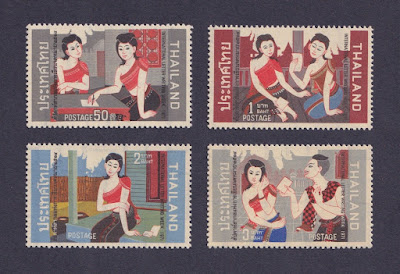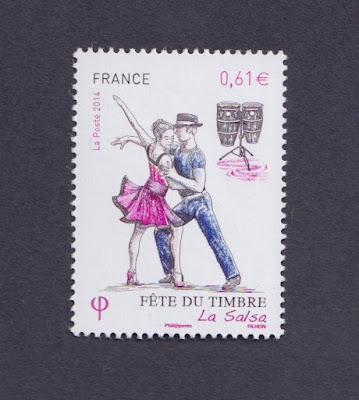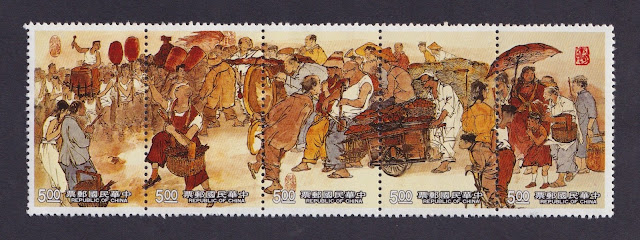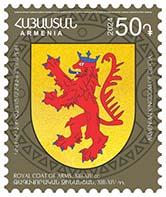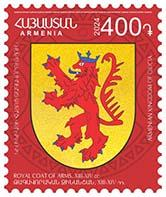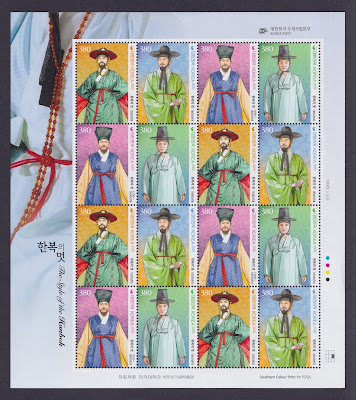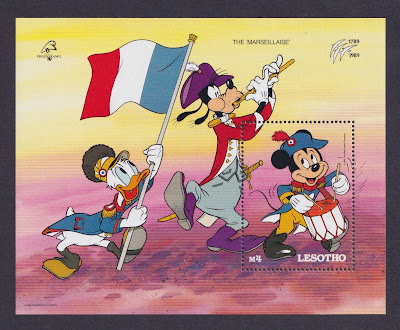Friday, March 7, 2025
Macau 2000 - Rituals - The Art of Tea
Technical Details:
Issue Name: Rituals – The Art of Tea
Issue Date: 07/07/2000
Designer: Loi Chio Teng
Paper: Couche 102 gr/m2
Size Stamp: 40mm x 30mm
Size SS: 138mm x 90mm
Perforation 12 x 12
Printing: Offset
Printer: INCM, Portugal
Tea from home is tasty, China is the homeland of tea. The Chinese have a tea-drinking history of 3000 years. Many tea producing countries in the world have imported tea trees or seeds directly or indirectly from China. The pronunciation of 'tea' in foreign languages is sound imitation of its Chinese name.
In the Tang Dynasty, Lu Yu wrote "The Book of Tea" and was honored as a sage in tea drinking. From then on, the art of tea became popular. To the Ming Dynasty, there was already a set of theories on planting, producing, making and tasting tea; and in the practicing process created "The Culture of Tea".
To make tea, tea leaves are most important. Since the Tang Dynasty, the techniques in producing tea have become exquisite, and developed species of unique flavors. In general, tea is divided into six main kinds: green, white, yellow, black, Wu Long and red. People in Macau today usually drink Pu Er, Shou Mei, Shui Xian, Long Jing and Te Guan Yin.
Making tea also needs to devote much attention to the water quality. The ancient Chinese sampling water could be in general divided into two groups. One was represented by Lu Yu, considering "mountain water to be higher, river water medium, well water lower".
MOP)
Another group was using sensation to distinguish water quality that water needed to be pure, to be light (soft water), to be sweet, to be clear. In sum, it requires good water to brew good tea, the fragrance of the tea would be doubled.
In Macau, there are many people from Fu Jian and Chao Zhou and they are in favor of Gong Fu tea. Being together with several good friends, weighted on appreciation, one will be in cheerfulness; it is also a kind of life enjoyment. The teahouses in the city are particular about having an elegant and tranquil atmosphere while the tea restaurants score a success by being lively and at will.
Author: Chan Chi Leong
Translator: Ao Vai Heng (Jocelyn) Assistant Professor of Macau Polytechnic Institute
Thailand 1971 - The Rural Life
Issue Date : 15 November 1971
Issue Name : Thai Rural Life
Perforation : 13.5
Denomination : 0.50 Baht,1.00 Baht ,2.00 Baht, 3.00 Baht
Details : To make know the Way of Living of Thai People in the Rural Areas
Size : 27 x 45 mm
Printer : The Government Printing Bureau, Ministry of Finance, Japan
Issue Name : Thai Rural Life
Perforation : 13.5
Denomination : 0.50 Baht,1.00 Baht ,2.00 Baht, 3.00 Baht
Details : To make know the Way of Living of Thai People in the Rural Areas
Size : 27 x 45 mm
Printer : The Government Printing Bureau, Ministry of Finance, Japan
Thailand 1970 - Thai Musical Instruments
Technical Details:
Issue Date : 20 December 1970
Issue Name : Thai Musical Instruments
Perforation : 13.5
Denomination : 0.50 Baht,2.00 Baht ,3.00 Baht, 5.00 Baht
Details : To promote Thai Musical Instruments
Size : 27 x 45 mm
Printer : The Government Printing Bureau, Ministry of Finance, Japan
Perforation : 13.5
Denomination : 0.50 Baht,2.00 Baht ,3.00 Baht, 5.00 Baht
Details : To promote Thai Musical Instruments
Size : 27 x 45 mm
Printer : The Government Printing Bureau, Ministry of Finance, Japan
Monday, February 24, 2025
France 2014 - Stamp Festival, Salsa
Date of Issue: 13 October 2014
Print Format: 25 x 36 mm
Max Format: 30 x 41 mm
Value €0.61
Perforation: 13 1/4
Quantity 1,500,000
Engraver: Line Filhon
Designed by: Valérie Besser
Salsa is both a dance and a musical genre. Its musical roots are nourished by several influences - Mambo, Guaracha or Bomba - and African rhythms, hence the name “salsa” (sauce, in Spanish) to express the idea of mixing. Salsa is danced in pairs, the boy guiding the girl, their steps mirroring each other: when the man advances his right foot, his date advances her left foot. The Salsa dancer is called “salsero,” the dancer, “salsera.” Puerto Rican Salsa can be influenced by other dances such as Hip-Hop, Rock or even classical dance. In Europe, Salsa arrived in the 90s and quickly enjoyed great success.
Sunday, February 16, 2025
India 2008 - Festivals of India
Technical Details:
Issuing Date: 07 October 2008
Theme: Exhibitions, Fairs & Carnivals (Carnivals)
Width: 35.00 mm
Height: 46.00 mm
Denomination: 5.00 INR
Set of 3
Format Miniature Sheet of 3 of 3 Designs
Perforations: 13 x 13
Issuing authority: Ministry of Communications Department of Posts
Printer: India Security Press, Nasik
5 INR - Festivals of India - Dussehra, Kolkata
5 INR - Festivals of India - Dussehra, Mysore
5 INR - Festivals of India - Deepavali
Wednesday, February 12, 2025
Macao 2024 - Intangible Cultural Heritage of Macao
Technical Details:
Issue Date: 17 May 2024
Designer: Lei Tak Seng
Issue Quantity: 200,000
Stamps per Sheet: 16
Paper: Paper with Security Fibres
Size: 30 x 40 mm
Perforation: 14 x 14 (With elliptical perforations)
Printing: Offset Lithography
Printer: Cartor Security Printers, France
Intangible Cultural Heritage of Macao
Macao, as a place of cultural integration, is home to a variety of folk customs and traditions. Over the past four hundred years, Chinese and Western cultures have taken root and flourished here, creating a unique cultural landscape in Macao, and forming precious “intangible cultural heritage”. These intangible cultural heritage items have been passed down through generations in Macao and are closely related to daily life, including folk customs, traditional skills, performing arts, etc. Among them, the intangible cultural heritage in the category of performing arts is diversified in form and variety, with items that embody the inheritance of Chinese traditional culture in Macao and those deeply influenced by Portuguese culture, such as Taoist Ritual Music, Patuá Theatre, Portuguese Folk Dance, Baatyam Percussion and Cantonese Opera.
MOP 2.50 - Taoist Ritual Music
Taoist Ritual Music is used in Taoist rituals and includes various forms of music, such as solo singing, chanting, percussion, wind music, ensemble, etc. It is combined with ritual ceremonies, recitation of scriptures, chanting of mantras, and dance movements to create a solemn and sacred religious atmosphere.
MOP 4.00 - Patuá Theatre
Patuá Theatre is a stage performance in which the Macanese community uses Macanese as the language of performance. Macanese is a Portuguese-based language that acquires the grammar and vocabulary from Malay, Canarese, Cantonese, English, Spanish, etc. The theatre often takes the form of comedy, expressing opinions on social issues and events that attract public interest. With its humorous and satirical style, not only does it bring laughter to the audience, but also provides inspiration for life.
MOP 4.50 - Portuguese Folk Dance
Portuguese Folk Dance is a type of group dance that originated in the rural areas of Portugal, and combines traditional folk dance, folk song, and instrumental music performance. Dancers, often in pairs of men and women, dance together in groups, accompanied by instrumental performance and folk singing, creating a lively rhythm. After being introduced to Macao, Portuguese Folk Dance incorporated local cultural elements and developed into a diverse form of performing art while inheriting Portuguese traditional culture.
MOP 6.00 - Baatyam Percussion
Baatyam Percussion is a type of folk music originated in Guangdong. It is classified into eight categories based on the materials and sound principles of the instruments: metal, stone, silk, calabash, bamboo, clay, leather, and wood. In Macao, Baatyam Percussion is mainly performed in birthday celebrations for deities, weddings, festive celebrations, funerals, rituals, etc. The performances can be divided into two types: parade performance and seated performance.
MOP 14.00 - Cantonese Opera (Souvenir Sheet)
Cantonese Opera is a traditional regional opera performed in Cantonese. The performance styles mainly involve singing, acting, recitation, and martial arts. It incorporates elements of literature, opera, music, and martial arts to present the story through makeup, costumes, stage props, gong and drum music, etc. It is a comprehensive performing art that combines various elements.
Each form of performing art belonging to intangible cultural heritage in Macao has its unique beauty. They not only showcase the harmonious integration of Chinese and Western cultures in Macao, but also reflect and highlight Macao's cultural positioning as a place where Chinese culture is the mainstream and multiple cultures coexist.
Cultural Affairs Bureau of the Macao Special Administrative Region Government Translation: NextVector Consultants Ltd.
Tuesday, February 11, 2025
Macau 2021 - Wushu - Chinese Martial Arts & Health
Date of Issue: 13 September 2021
Designer: Lok Hei
Issue Quantity﹕250000
Stamps per sheet: 16
Paper: Paper with Security Fibres
Size of Stamp: 40 x 30 mm
Size of SS: 138 x 90 mm (Stamp size: 40 x 40 mm)
Perforation Stamp: 13 x 13¼ (With elliptical perforations)
Perforation Stamp on SS: 12 x 11¾ (With elliptical perforations)
Printing: Offset Lithography with Microprinting
Printer: Joh. Enschedé Security Print, The Netherlands
Wushu – Chinese Martial Arts and Health
Martial arts emerged from life, and eventually evolved in the process of picking wild fruits, hunting, and resisting fierce beasts, and had the purpose of “strengthening the body in times of peace and defending the country in times of chaos” during the cold weapon era. We are fortunate to be in a peaceful time with scientific and technological advancement, and “Wushu – Chinese Martial Arts and Health” is one of the good options for individuals to attain physical and mental health.
Southern traditional martial arts cover a wide range of fields, including Chinese boxing, equipment, Qigong, dragon dance, lion dance, and bone-setting.
MOP 2.50 - Constant Training
As the proverb says, “flowing water does not rot, nor a door-hinge rust”, meaning that flowing water does not stink, and a moving hinge does not rot, which is a metaphor for only with daily workout can vitality endure and flourish. The same applies to “Wushu – Chinese Martial Arts and Health”. Constant training in martial arts is a healthy practice and helps improve the flexibility of muscles and joints, facilitate the circulation of Qi and blood to refresh the day.
MOP 4.00 - Qigong - Yi Jin Jing
“Yi Jin Jing” is an exercise that focuses on traditional Chinese medicine and the theory of Yin and Yang and the five elements. It stimulates the meridians and internal organs through the 12 posture moving exercises, so that the meridians are unimpeded and the Qi and blood are harmonized to achieve the aim of strengthening the body; it is characterized by stretching the tendons and pulling the bones, combining rigidity and flexibility, integrating motion and rest, and channeling the Qi, which is a set of effective traditional exercises for health, fitness, disease prevention and intellectual growth.
MOP 4.50 - Lion Dance
Southern lion dance was originally named “auspicious lion” for its auspicious meaning; people were stripped of their means of subsistence during the late Qing Dynasty by the invasion of foreign forces and the spread of war. In this period of time, lion dance was widespread in the school of martial arts, so the mixture of lion dance and martial arts skills was further developed. The sound “auspicious” and “sleep” pronounced the same in Cantonese, so it was renamed by chivalrous Chinese and patriots “awake lion”, which was an overt reminder that the country should be self-improved and encouraged the nation to develop and reinforce.
The lion dance can promote physical fitness, exercise the will, develop positive character, and reinforce the teamwork spirit.
MOP 6.00 - Choi Lei Fat Martial Arts
Choi Lei Fat Martial Arts was inscribed on the National List of Intangible Cultural Heritage in 2008 and one of the items on the Inventory of Intangible Cultural Heritage of Macao in 2020.
Choi Lei Fat Martial Arts was founded in 1836 by Chan Heung, a native of King Mui, Xinhui District, Guangdong province. At an early age, Chan Heung learned Fat Martial Art from his uncle, Chan Yuen Hu, and took Lei Iao San as his teacher when he grew up. Later, he learnt another martial art from the Shaolin monk Choi Fu. He studied Chinese boxing styles and combined the techniques of the three teachers to create a new style of Chinese boxing, which was called “Choi Lei Fat Martial Arts”, to honor the teachings of his teachers.
MOP 14.00 - Martial Virtue (Souvenir Sheet)
In order to attain the higher level of “Wushu – Chinese Martial Arts and Health”, martial arts practitioners must continuously enhance overall consistency and enforce the criterion of “martial virtue ” on practitioners, so that excellent cultural accomplishments of Chinese martial arts can be fully inherited and promoted, and the norm of “advocating martial arts and virtue, strengthening one’s body with martial arts, nurturing one’s character with virtue, and pursuing both professional excellence and moral integrity” can be achieved.
Author: Un Oi Mou President of the Association of Martial Arts and Physical Education of Macao Workers Translation: NextVector Consultants Ltd.
Sunday, August 4, 2024
China 2023 - The Knick-Knack Peddler
Date of Issue: 18 June 2023
Denomination: 240 fen
Designer: Wang Huming
Size of Stamps: 55 * 42 mm
Perforation: 13
Sheet Composition: 12
Size of Sheet: 203 * 200 mm
Size of S/S:
190 * 85 mm for S/S
138 * 50 mm for S/S stamp
Perforation of S/S: 13
Printing Process: Offset and Engraving
Printing House: Beijing Postage Stamp Printing Works
Denomination: 240 fen
Designer: Wang Huming
Size of Stamps: 55 * 42 mm
Perforation: 13
Sheet Composition: 12
Size of Sheet: 203 * 200 mm
Size of S/S:
190 * 85 mm for S/S
138 * 50 mm for S/S stamp
Perforation of S/S: 13
Printing Process: Offset and Engraving
Printing House: Beijing Postage Stamp Printing Works
The artwork was done by Song Dynasty artist Li Song 李嵩 (1166–1243) and is currently held by the National Palace Museum. The painting translates roughly to Picture of the Merchant or Picture of the Shopkeeper. It is part of what is called the Li Song Lang Scroll. It is made of silk and is 25.5 cm long, 70.4 cm wide. This site has an interesting biography on Li Song 李嵩_百度百科 (baidu.com). You’ll need to use a translator to read it, but worth the effort.
… showing the merchant carrying the burden of groceries, bending over overwhelmed, and the joy of the cheering children running to tell each other. The cargo carries a wide range of items, from pots and plates and children’s toys to fruit and melon pastries. In the Southern Song Dynasty, when the circulation of goods was not yet developed, the merchants walked the streets and alleys, a pair of goods was a small department store, the merchants not only brought the goods needed for the remote countryside, but also brought a variety of novel news, the arrival of the merchants was often as lively as a festival, Li Song depicted such a scene in the picture. The painter used the theme of the goods … to express an aspect of the life of the Southern Song Dynasty, and those dazzling objects, although many of them have unknown uses today, but they truly record the lifestyle of the people of the Southern Song Dynasty and are rare and precious historical materials for folklorists. Li Song Lang Scroll – Palace Museum (dpm.org.cn) (translated from the original)
China 2024 - Yue Opera (Yue Ju)
Technical Details:
Date of Issue: May 20th, 2024
Denomination: 360 fen
Designer: Lu Jienan, Guo Xianlu
Size of stamps: 30 * 40 mm
Perforation: 13.5
Sheet composition: 12
Size of sheet: 150 * 190 mm
Printing process: Offset
Printing House: Beijing Postage Stamp Printing Works
China 2023 - Tai Chi Quan, Chinese Martial Art
Technical Details:
Date of Issue: 08 August 2023
Denomination: 360 fen
Designer: Wang Yaping, Zhang Fan
Size of stamps: 40 * 30 mm
Perforation: 13
Sheet composition: 12
Size of sheet: 150 * 60 mm
Printing process: Photogravure
Printing House: Beijing Postage Stamp Printing Works
Tuesday, July 30, 2024
Taiwan 1992 - Living in the Countryside
Technical Details:
Issue Date: 22 September 1992
Dimension of stamps(mm.) 30x49
Printer: China Engraving & Printing Works, R.O.C.
Designer: Li Chi-mao
Sheet Composition: 10×5
Process: Deep etch offset
Paper: Locally-made mat finished, watermarked stamp paper with gum
Perforation: 11 1/2
Many of the beliefs of our people are a combination of religion and ancient myths. The adoration of spirit and soul and to remember the endeavors of our ancestors through the activities of the temple fair have positive influences on daily life. Through the devoutness of religious duties, our people are able to readjust body and spirit. This set of stamps depicts the pure and simple characteristics of our religious culture through the prosperity of a temple fair of the countryside. It consists of five 5.00 stamps which are arranged in a se-tenant strip.
Dimension of stamps(mm.) 30x49
Printer: China Engraving & Printing Works, R.O.C.
Designer: Li Chi-mao
Sheet Composition: 10×5
Process: Deep etch offset
Paper: Locally-made mat finished, watermarked stamp paper with gum
Perforation: 11 1/2
Many of the beliefs of our people are a combination of religion and ancient myths. The adoration of spirit and soul and to remember the endeavors of our ancestors through the activities of the temple fair have positive influences on daily life. Through the devoutness of religious duties, our people are able to readjust body and spirit. This set of stamps depicts the pure and simple characteristics of our religious culture through the prosperity of a temple fair of the countryside. It consists of five 5.00 stamps which are arranged in a se-tenant strip.
Taiwan 2021 - Hakka Festival
Technical Details:
Issue Date: 24 November 2021
Dimension of stamps: 50 mm × 30 mm
Printer: China Color Printing Co., Ltd.
Designer: KN Creative Design Co., Ltd.
Sheet Composition 20(4 × 5)
Print Color: Colorful
Process: Offset
Paper: Phosphorescent stamp paper
Perforation: 13 × 12½
To introduce the customs of Taiwan’s Hakka people, Chunghwa Post has specially released a set of four stamps on Hakka festivals. The stamps are described below:
1. Miaoli Dragon Bombing Festival (NT$8): This refers to the lighting of firecrackers during dragon dances. The more firecrackers, the better the effect, as the smoke makes it appear as if the dragon spirits are weaving through the clouds. A Lantern Festival custom that is unique to Miaoli, dragon bombing has been performed since early days of Hakka settlements in the county. It comprises seven steps: making the dragon, inviting the dragon, dotting the eyes of the dragon, welcoming the dragon, lighting firecrackers around the dragon, following the dragon, and sending off the dragon for his return to heaven.
2. Liudui Defending the City Walls Festival (NT$8): The custom dates to the early years of the pioneering Hakka settlements in Pingtung’s Liudui, when local patrols would light firecrackers to alert the community about enemy incursions. With changing times, it became an activity used to pray to the Hakka Land God for good fortune in spring.
3. Taichung Dongshi Xin Ding Ban Festival (NT$12): In early Hakka agricultural society, villagers would offer rice cakes to the Land God and Goddess to pray for a baby. When their wishes were met, they would then offer thanks with even more rice cakes. These rice cake offerings are known as xin ding ban, or new child cakes. For baby boys, the cakes are molded into turtle shapes; for baby girls, peach shapes.
4. Guoxing Chenggong Festival (NT$12): The festival includes activities that capture the resolute reputation of the Hakka ethnic group, exemplified by the phrase: “Work fervently, ploughing field and slope.” The festival symbolizes the energy and solidarity of the people in Nantou’s Guoxing Township. Each team is composed of seven to eleven members. One is the flag capturer, and the rest push a “battleship” that carries the flag capturer and a statue of Zheng Chenggong. The first team that grabs the flag wins the blessings of Koxinga and thus claims a symbol of “success.”
Dimension of stamps: 50 mm × 30 mm
Printer: China Color Printing Co., Ltd.
Designer: KN Creative Design Co., Ltd.
Sheet Composition 20(4 × 5)
Print Color: Colorful
Process: Offset
Paper: Phosphorescent stamp paper
Perforation: 13 × 12½
To introduce the customs of Taiwan’s Hakka people, Chunghwa Post has specially released a set of four stamps on Hakka festivals. The stamps are described below:
1. Miaoli Dragon Bombing Festival (NT$8): This refers to the lighting of firecrackers during dragon dances. The more firecrackers, the better the effect, as the smoke makes it appear as if the dragon spirits are weaving through the clouds. A Lantern Festival custom that is unique to Miaoli, dragon bombing has been performed since early days of Hakka settlements in the county. It comprises seven steps: making the dragon, inviting the dragon, dotting the eyes of the dragon, welcoming the dragon, lighting firecrackers around the dragon, following the dragon, and sending off the dragon for his return to heaven.
2. Liudui Defending the City Walls Festival (NT$8): The custom dates to the early years of the pioneering Hakka settlements in Pingtung’s Liudui, when local patrols would light firecrackers to alert the community about enemy incursions. With changing times, it became an activity used to pray to the Hakka Land God for good fortune in spring.
3. Taichung Dongshi Xin Ding Ban Festival (NT$12): In early Hakka agricultural society, villagers would offer rice cakes to the Land God and Goddess to pray for a baby. When their wishes were met, they would then offer thanks with even more rice cakes. These rice cake offerings are known as xin ding ban, or new child cakes. For baby boys, the cakes are molded into turtle shapes; for baby girls, peach shapes.
4. Guoxing Chenggong Festival (NT$12): The festival includes activities that capture the resolute reputation of the Hakka ethnic group, exemplified by the phrase: “Work fervently, ploughing field and slope.” The festival symbolizes the energy and solidarity of the people in Nantou’s Guoxing Township. Each team is composed of seven to eleven members. One is the flag capturer, and the rest push a “battleship” that carries the flag capturer and a statue of Zheng Chenggong. The first team that grabs the flag wins the blessings of Koxinga and thus claims a symbol of “success.”
Saturday, July 13, 2024
Saudi Arabia 2024 - Saudi Ardah Dances
The Saudi Post Corporation (SPL), in collaboration with the Ministry of Culture, has issued a commemorative postage stamp featuring the Saudi Ardah dance. This newly released Ardah postage stamp serves as a representation of the nation’s vibrant cultural heritage, thereby reinforcing its national legacy.
The Saudi Ardah is a collective dance performed by men, symbolizing unity between the leadership and the people. It evokes enthusiasm and reflects an emotional bond, demonstrating love for the land and loyalty to the nation's leaders. Characterized by joyful and energetic movements, the dance is accompanied by harmonious rhythmic unity. Elevated with prestige and solemnity, it incorporates the national flag and swords, creating a magnificent visual spectacle.
The SPL regularly issues postage stamps to commemorate significant national events, including religious, cultural, artistic, and sports occasions, as well as notable international events. Each stamp serves as a tribute to pivotal moments or immortalizes prominent scenes from Saudi Arabia's history. Consequently, it appeals not only to stamp collectors worldwide but also to historians interested in documenting history.
Sunday, April 28, 2024
Tuesday, March 12, 2024
Armenia 2024 - Armenian Coats of Arms (8th Definitive Issue)
8th Definitive Issue. Armenian Coats of Arms
Оn March , 2024 nine postage stamps dedicated to the theme “18th Definitive Issue. Armenian Coats of Arms” have been put into circulation. The postage stamps depict the Royal Coat of Arms (XIII-XIV cc.) of Armenian Kingdom of Cilicia.
The postage stamps also depict the inscriptions “ROYAL COAT OF ARMS”, “ARMENIAN KINGDOM OF CILICIA” in Armenian and English languages.
Date of issue: March, 2024
Designer: David Dovlatyan
Consultant on heraldic elements: Samvel Grigoryan (Doctor of History of the Paul-Valéry University of Montpellier, Institute of Medieval Research of the Austrian Academy of Sciences)
Printing house: Cartor, France
Size: 20,0 x 24,0 mm
Stamps per sheet: 20 pcs
Print run:
10 - 50 000 pcs
20 - 50 000 pcs
50 - 50 000 pcs
100 - 50 000 pcs
320 - 100 000 pcs
380 - 500 000 pcs
400 - 100 000 pcs
1000 - 50 000 pcs
1600 - 50 000 pcs
20 - 50 000 pcs
50 - 50 000 pcs
100 - 50 000 pcs
320 - 100 000 pcs
380 - 500 000 pcs
400 - 100 000 pcs
1000 - 50 000 pcs
1600 - 50 000 pcs
Thursday, October 12, 2023
Vietnam 2020 - UNESCO, Worshipping of the Tam Phu Mothers
Technical Details:
Date of Issued: 06 December 2020
Design: Nguyen Du
Theme: Religions & beliefs (Buddhism)
Width: 43.00 mm
Height: 32.00 mm
Denomination: 4,000 VND
Format: Sheet of 25 of 1 design
Perforations: 13.00 x 13.00
Issuing Authority: Vietnam Post (VNPost) - Ministry of Information and Communications (MIC)
Printer: Post Stamp Printing Company, Vietnam
Mother Goddesses of Three Realms Worship - Intangible cultural heritage of humanity:
4,000 VND - Three palaces for worshiping Mother Goddesses (Tam toa Thanh mau)
4,000 VND - Trance rituals (Hau bong)
15,000 VND - Five-deity worshiping (Kieu Nam quan)
15,000 VND (SS) - Procession of Mother Goddess (Ruoc mau)
Design: Nguyen Du
Theme: Religions & beliefs (Buddhism)
Width: 43.00 mm
Height: 32.00 mm
Denomination: 4,000 VND
Format: Sheet of 25 of 1 design
Perforations: 13.00 x 13.00
Issuing Authority: Vietnam Post (VNPost) - Ministry of Information and Communications (MIC)
Printer: Post Stamp Printing Company, Vietnam
4,000 VND - Three palaces for worshiping Mother Goddesses (Tam toa Thanh mau)
4,000 VND - Trance rituals (Hau bong)
15,000 VND - Five-deity worshiping (Kieu Nam quan)
15,000 VND (SS) - Procession of Mother Goddess (Ruoc mau)
Friday, October 6, 2023
Spain 2023 - Nannies of Pasiegas
About Nannies of Pasiegas
The Amas de Cría Pasiegas were young women of childbearing age, who left their children to go to different parts of the Spanish geography, and take care of the infants of other mothers, always from a good family, who could not or did not want to raise their children. their children.
The nannies came to achieve such fame that the name pasiega was taken as a synonym for wet nurse, and the typical pasiego costume was even adopted as the uniform of the nannies who arrived in the capital. Many returned to their homes years later, when they had managed to raise enough money to improve the family economy and offer a good future for their children and husband.
Tuesday, September 19, 2023
Monday, September 18, 2023
Laos 2023 - Ethnic Wedding Dress
Date of Issued: 19 June 2023
Denomination: 18,000 KIP, 18,000 KIP, 18,000 KIP
Quantity: 30,000 pieces (10,000 sets)
Size: 31 x 46 mm
Souvenir Sheet (Perforation): 60,000 KIP/ 1,000 Pieces
Souvenir Sheet (Non Perforation): 60,000 KIP/ 1,000 Pieces
Printing Process: Offset
Color: Multi-Color
Place of Printing: Vietnam Stamp Printing
Designer: Mr. Vongsavanh Damlongsouk
Sine ancient times, in each village, the people of Laos have self-made cloth blankets. When they do not have dyes, they take fruits from the mountains to create color. The woven in Laos like to wear cloth flowers, dark colored fabrics, and fresh as the color of the natural leaves of the forest. However the type of dress and the type of trousers also selected for convenience, suitable for the season with specific circumstance. Laotian traditional often wears an important occasion or ceremony and in many rural areas, you will easily catch a glimpse of children wearing "Tube Skirts" to school. Otherwise. "Sinh" and "Salong" are various in colors and depend on their occasions such as a wedding or funeral of the festival.
Laos 2023 - Living of Farmers
Date of Issued: 16 June 2023
Denomination: 8,000 KIP, 8,000 KIP, 18,000 KIP
Quantity: 15,000 pieces (5,000 sets)
Size: 31 x 46 mm
Souvenir Sheet (Perforation): 40,000 KIP/ 1,000 Pieces
Souvenir Sheet (Non Perforation): 40,000 KIP/ 1,000 Pieces
Printing Process: Offset
Color: Multi-Color
Place of Printing: Vietnam Stamp Printing
Designer: Mr. Vongsavanh Damlongsouk
Laos is a country that rich in natural resources. In the past, the farmers used to plan rice using primitive tools using human and animal power, before planting rice, they had to use bufallo as plows. After that, they used human power to plant rice. It took 5 or 6 months to harvest the rice. The tools used to plant rice are: bufallo, hoe, plow and harrow. The year of harvest can be planted in two seasons as name "Nashan and Napi"
Subscribe to:
Posts (Atom)


